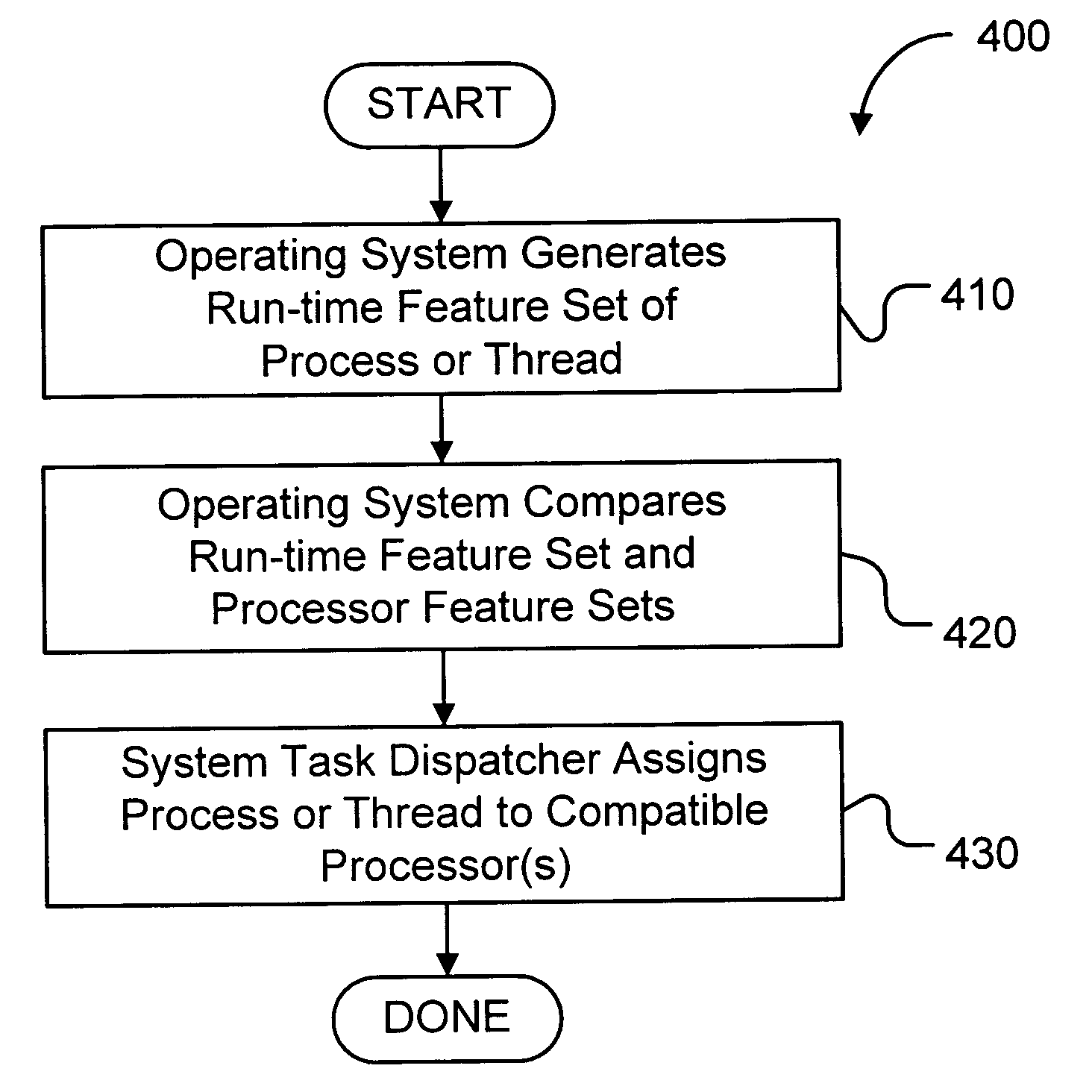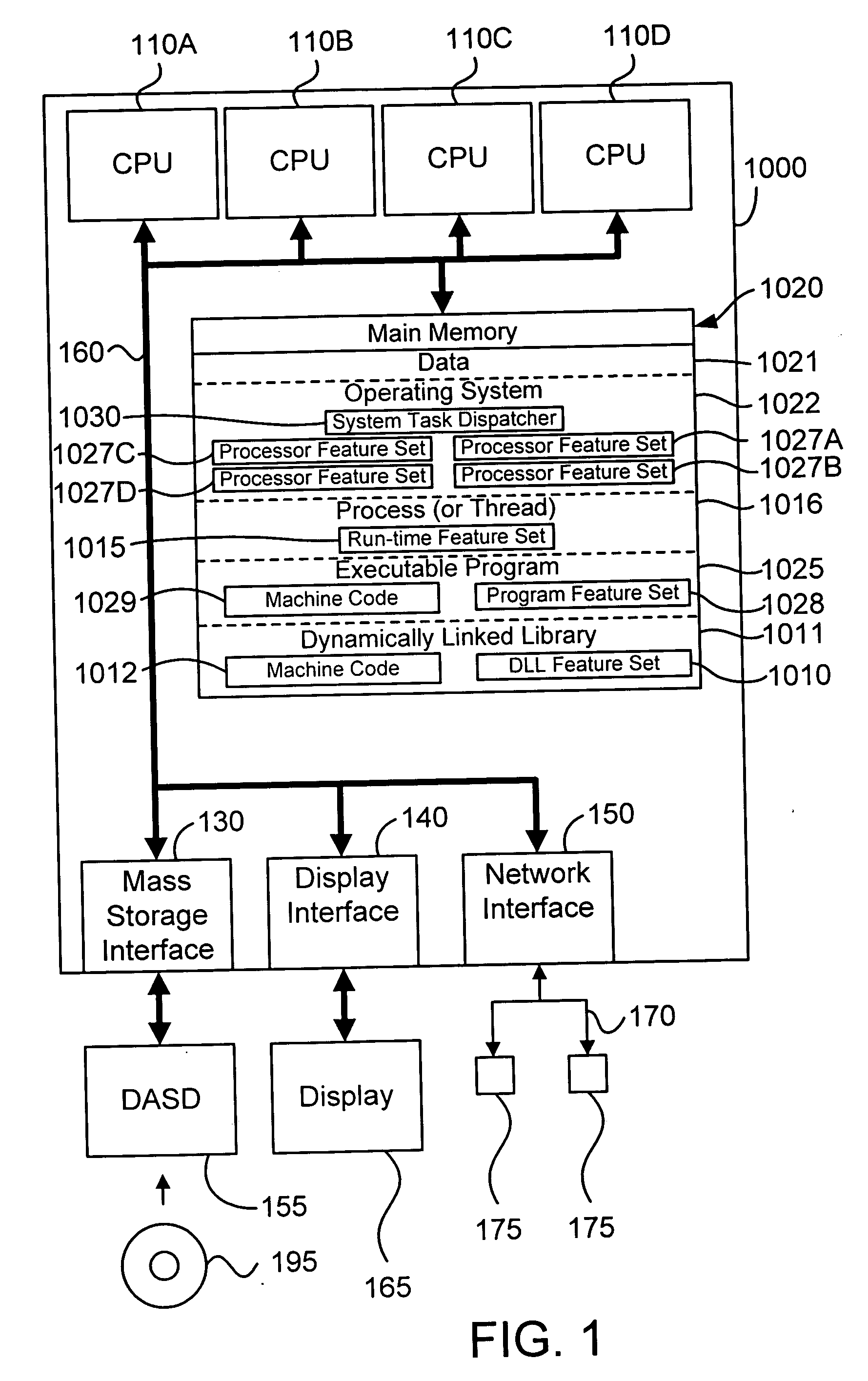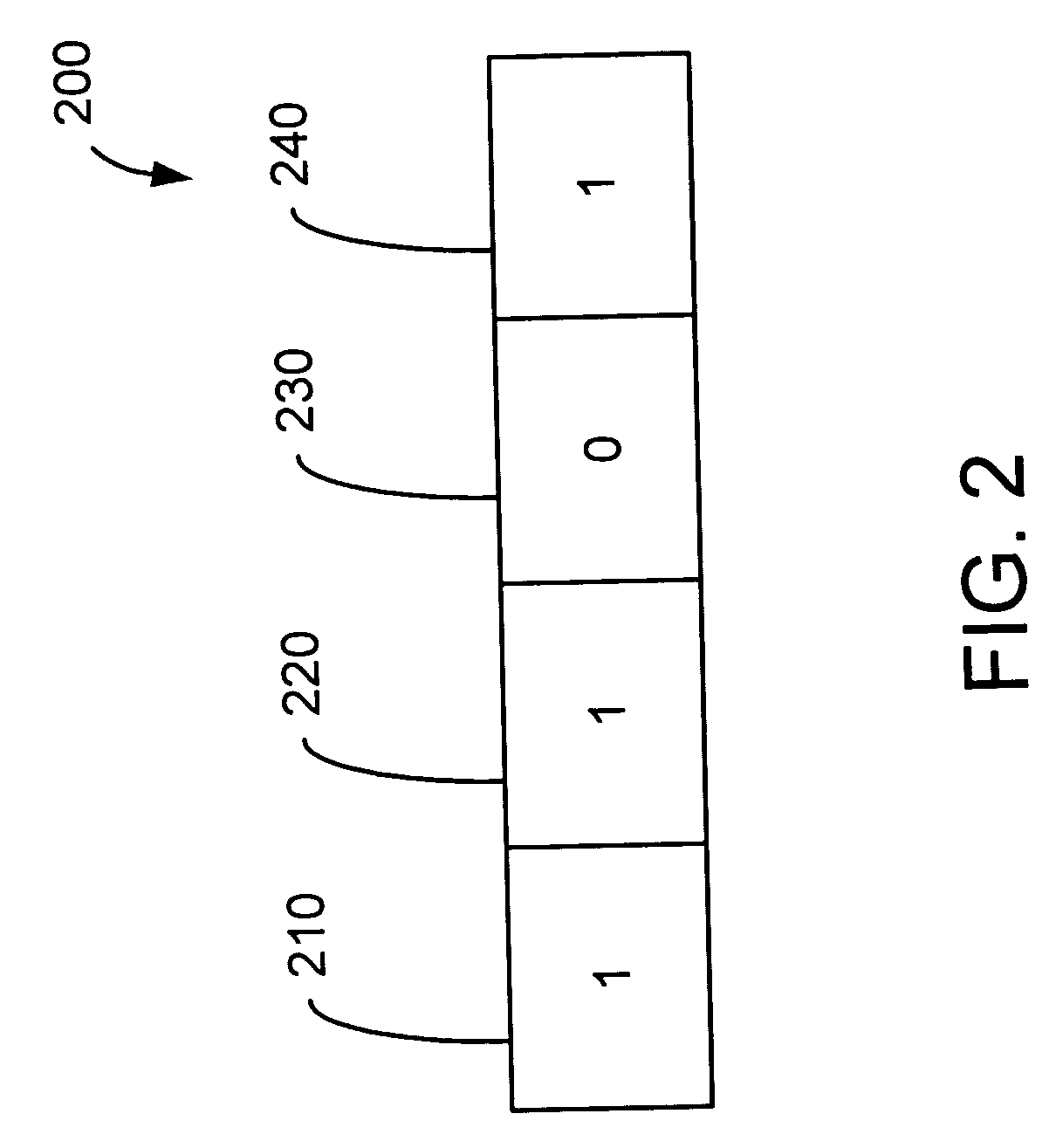Method, apparatus, and computer program product for adaptive process dispatch in a computer system having a plurality of processors
a computer system and processor technology, applied in the field of digital data processing, can solve the problems of increasing the complexity of the system, the method became clearly unworkable, and the program was difficult for a human to write, understand and maintain
- Summary
- Abstract
- Description
- Claims
- Application Information
AI Technical Summary
Benefits of technology
Problems solved by technology
Method used
Image
Examples
Embodiment Construction
[0029] 1.0 Overview
[0030] Adaptive process dispatch (or adaptive processor selection) in accordance with the preferred embodiments of the present invention relies upon feature sets, such as program feature sets and processor feature sets. The provenance of these feature sets is unimportant for purposes of the present invention. For example, the program feature sets may be created by adaptive code generation or some other mechanism in a compiler, or by some analysis tool outside of a compiler. With regard to adaptive code generation, it is significant to note that the present invention allows the use of adaptive code generation in heterogeneous processor environments. As noted above, this patent application is related to a pending U.S. patent application ______ (docket no. ROC920050022US1), filed concurrently, entitled “METHOD, APPARATUS, AND COMPUTER PROGRAM PRODUCT FOR ADAPTIVELY GENERATING CODE FOR A COMPUTER PROGRAM”, which is assigned to the assignee of the instant application....
PUM
 Login to View More
Login to View More Abstract
Description
Claims
Application Information
 Login to View More
Login to View More - R&D
- Intellectual Property
- Life Sciences
- Materials
- Tech Scout
- Unparalleled Data Quality
- Higher Quality Content
- 60% Fewer Hallucinations
Browse by: Latest US Patents, China's latest patents, Technical Efficacy Thesaurus, Application Domain, Technology Topic, Popular Technical Reports.
© 2025 PatSnap. All rights reserved.Legal|Privacy policy|Modern Slavery Act Transparency Statement|Sitemap|About US| Contact US: help@patsnap.com



